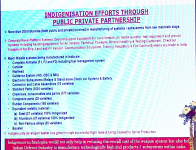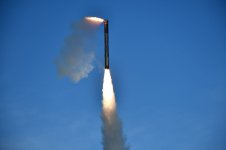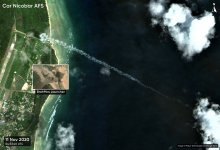Brahmos Supersonic Cruise Missile : News, Updates and Discussions
- Thread starter Manmohan_MMY
- Start date
You are using an out of date browser. It may not display this or other websites correctly.
You should upgrade or use an alternative browser.
You should upgrade or use an alternative browser.
Maybe they are still optimizing. Optimizing how they can milk ignorant and naive India of lot of money.
Vietnam, India close to finalising BrahMos deal
India and Vietnam are closer than ever to signing a USD 700 million Brahmos missile system deal as both sides plug in more procedural details. The deal could be signed as early as in a couple of months, and it is learnt that the initial techno-commercial details have already been shared and discussed by the Vietnamese Defence Ministry. Orders are expected from both the Vietnamese Army and Navy.
BrahMos missile is developed by BrahMos Aerospace, a collaboration between India's Defence Research and Development Organisation (DRDO) and Russia's NPO Mashinostroyeniya.
If this deal materialises, then Vietnam will be the second country after the Philippines to purchase the BrahMos supersonic cruise missiles from India.
Vietnam, it is understood, has been waiting for some time for the draft agreement, which includes the final deal amount, delivery timeline, payment terms, etc., from BrahMos Aerospace (BAPL).
The development comes at a time when Brahmos's top brass faces leadership challenges over the appointment of new CEO and MD, Dr. Jaiteerth Raghavendra Joshi.
Dr. Sivasubramanyam Nambi Naidu has legally challenged Dr. Jaiteerth R. Joshi's appointment as CEO of BrahMos Aerospace, citing issues of seniority and merit.
The case, filed at the Central Administrative Tribunal in Hyderabad, has its next hearing scheduled in a few days. While talks over Brahmos have taken place, Vietnam in the past procured Bastion-P (K-300P) coastal defence missile systems from Russia, with the first delivery occurring in 2011.
India and Vietnam have been firming up defence ties. Earlier this week, the India Pavilion at Vietnam International Defence Expo VIDE24 was jointly inaugurated by Vietnam’s Minister of Public Security, Gen Luong Tam Quang, Indian Secretary-Defence Production, Sanjeev Kumar, and Indian Ambassador to Vietnam, Sandeep Arya.
VIDE24 showcases the latest global defence technologies, including those from India. Brahmos Aerospace from India was one of the exhibitors, along with DRDO, HAL, and Mazagon Dock Shipbuilders.
India's Vice Chief of the Army Staff, Lieutenant General N. S. Raja Subramani, is also on a visit to the country and attended VIDE 2024. During the official visit to Vietnam, Lieutenant General NS Raja Subramani attended the 80th Anniversary of the Vietnam People’s Army (VPA) at the National Convention Centre, Hanoi.
An Army statement said, "This visit further strengthens collaboration between the armies of the two nations, which is grounded in strategic collaboration and trust and is crucial for enhancing security in the Indo-Pacific, thereby ensuring a stable and prosperous region for all."
In 2022, India handed 12 high-speed guard boats to Vietnam, built under India's $100 million Defence Line of Credit. The following year, India announced the gifting of an indigenously built missile corvette, INS Kirpan, to Vietnam. Both countries have a mutual logistics support agreement that allows use of each other's military bases for repair and replenishment. India has also been training Vietnamese personnel.
A 50-member Indian defence contingent participated in the fourth edition of the VINBAX – 2023 military exercises in Vietnam in December 2023 on UN peacekeeping scenario. Vietnam’s navy ship participated in international maritime exercise MILAN in India in February 2024.
- BrahMos Aerospace Private Limited
- Two contracts were inked in March 2024 for procurement of BrahMos missiles at a cost of Rs 19,518.65 crore and Procurement of Ship borne BrahMos system at a cost of Rs 988.07 crore.
Prabowo’s wish list includes BrahMos missiles


From the recent A&N launch:
View attachment 39708
View attachment 39707
From an earlier A&N launch:
View attachment 39709
How da fuq did they time the satellite photo with the launch?
86% indigenisation complete as we have already known for some time. (possibly by value) Only the ramjet being the final elusive piece of the puzzle.
View attachment md talk02.mp4


View attachment md talk02.mp4


There are so many up there right now...... I won't be surprised if few are dedicated for India missile tests alone.How da fuq did they time the satellite photo with the launch?
probably not so low for cuise.View attachment 39803View attachment 39804
Old pic's of brahmos hitting the surface vessels, the missile flies very close to the surface of the water
The missile take a dive at the end of it flight, driven by its seeker, so as to explode well inside the hull.
So big order coming up then. It won't just end with a $450M order.
In case all the amateur experts here didn't notice we're financing Indonesia's bid to buy the Brahmos. Further this is Indonesia we're talking about.
When they faced a financial crunch in either coughing up their contribution to the TFX project or their bid to buy submarines from RoK they casually turned around & offered a barter deal to the Koreans in the form of palm oil. You can take a wild guess at how things panned out .
Since we import huge quantities of them from Indonesia as it is, you can rest assured they'd pull this from their hat sooner rather than later with the value of the palm oil linked to prevailing market rates which means in terms of sheer value we stand to potentially lose & that's only part of the problem.
Further, I believe they've also requested for payment in Indonesian rupiah which is under negotiations. The French are equally susceptible to the barter in palm oil card in the Rafale deal.
Whoever finances them will have to tie up with agencies here to dispose of the palm oil. And now they want a ToT. Real shrewd guys these palm tree climbers turned out to be. Certainly light years better than our lot who're good only for kerimeen & toddy.
I predict we're going to have real fun times with this deal such that we may well buy another full regiment of Brahmos, otherwise not needed, only to target Indonesia.

 www.firstpost.com
www.firstpost.com
When they faced a financial crunch in either coughing up their contribution to the TFX project or their bid to buy submarines from RoK they casually turned around & offered a barter deal to the Koreans in the form of palm oil. You can take a wild guess at how things panned out .
Since we import huge quantities of them from Indonesia as it is, you can rest assured they'd pull this from their hat sooner rather than later with the value of the palm oil linked to prevailing market rates which means in terms of sheer value we stand to potentially lose & that's only part of the problem.
Further, I believe they've also requested for payment in Indonesian rupiah which is under negotiations. The French are equally susceptible to the barter in palm oil card in the Rafale deal.
Whoever finances them will have to tie up with agencies here to dispose of the palm oil. And now they want a ToT. Real shrewd guys these palm tree climbers turned out to be. Certainly light years better than our lot who're good only for kerimeen & toddy.
I predict we're going to have real fun times with this deal such that we may well buy another full regiment of Brahmos, otherwise not needed, only to target Indonesia.

India, Indonesia working to conclude $450 mn rupee-rupiah transaction for BrahMos missiles; announcement likely on R-Day
For financing the Rs 4,000 crore deal, India is offering a loan to Indonesia from either the State Bank of India (SBI) or another Indian national bank
Indonesia already deploys the Yakhont missile. Strange that they want the Brahmos now. Both have the same kinematic performance, perhaps the guidance, eccm is what interests them. Hope it's a downgraded export version with previous gen electronics we're selling them. These guys have 'brotherly ties' with the Pakistanis.
Last edited:
Ex LRSAM director hogging up the limelight.
Ex LRSAM director hogging up the limelight.
Ex LRSAM director hogging up the limelight.












